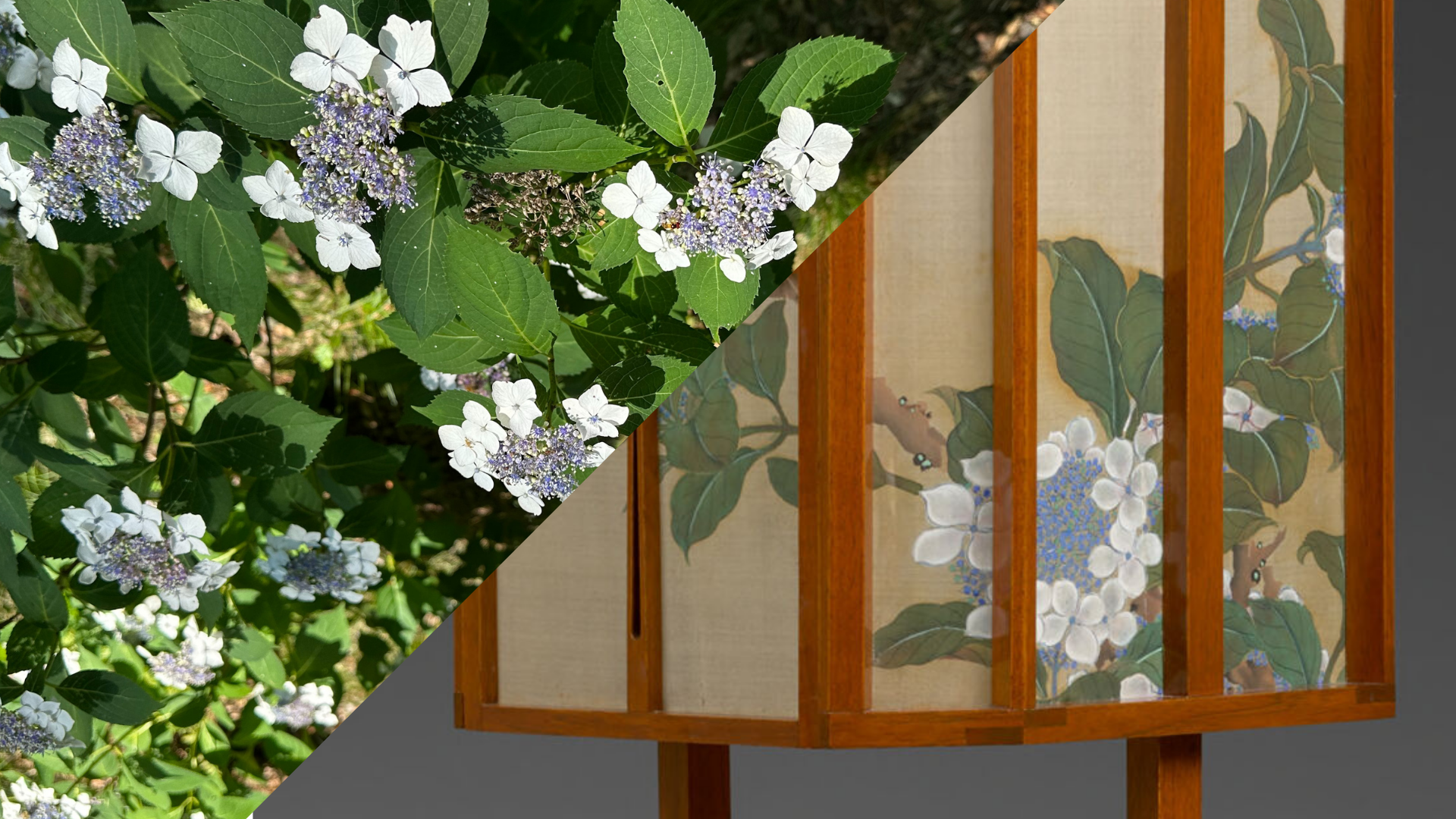Our Double Take series is a collaboration with Harvard Art Museums, pairing objects from both collections: a plant from the Arnold Arboretum + a work of art from the Harvard Art Museums.
First up: a 19th-century Japanese lantern + hydrangeas that are currently blooming. Arboretum Keeper of the Living Collections Michael Dosmann compares the lantern, with its strikingly realistic depiction of a hydrangea, to Hydrangea macrophylla ssp. serrata ‘Tokyo Delight’ in our landscape, telling the story of how these plants—just like the lantern—came all the way from Japan to Boston.
There is no evidence that the lantern was used, but had a light been installed inside the flickering would have animated the birds and flowers, making them look like they were moving slightly.
In Japanese art, there is often a tension between nature and human intervention. For example, Japanese gardens are highly manicured, and a lot of care is taken to create distinct views. This lantern seems to have the same tension—as if the artist has caught the sparrows alighting for a short moment on a blooming branch of just-opened hydrangea—but the moment has been forever preserved in paint, the lantern’s wooden armature framing our view.
Visit the hydrangea (1136-84*MASS-B) at the Arboretum just off of Linden Path.
Visit the lantern at the Harvard Art Museums in Gallery 2600.
Matsumura Keibun 松村景文, Painted Lantern, first half 19th century. Wood frame; ink and color on silk. Harvard Art Museums/Arthur M. Sackler Museum, Gift of Robert S. and Betsy G. Feinberg. 2022.447.
